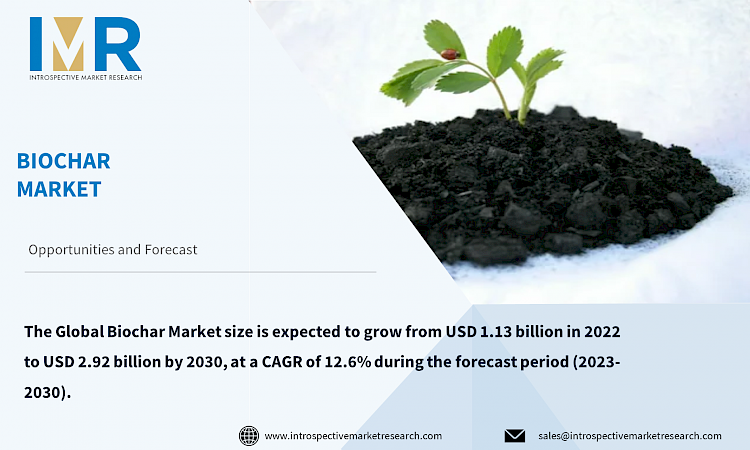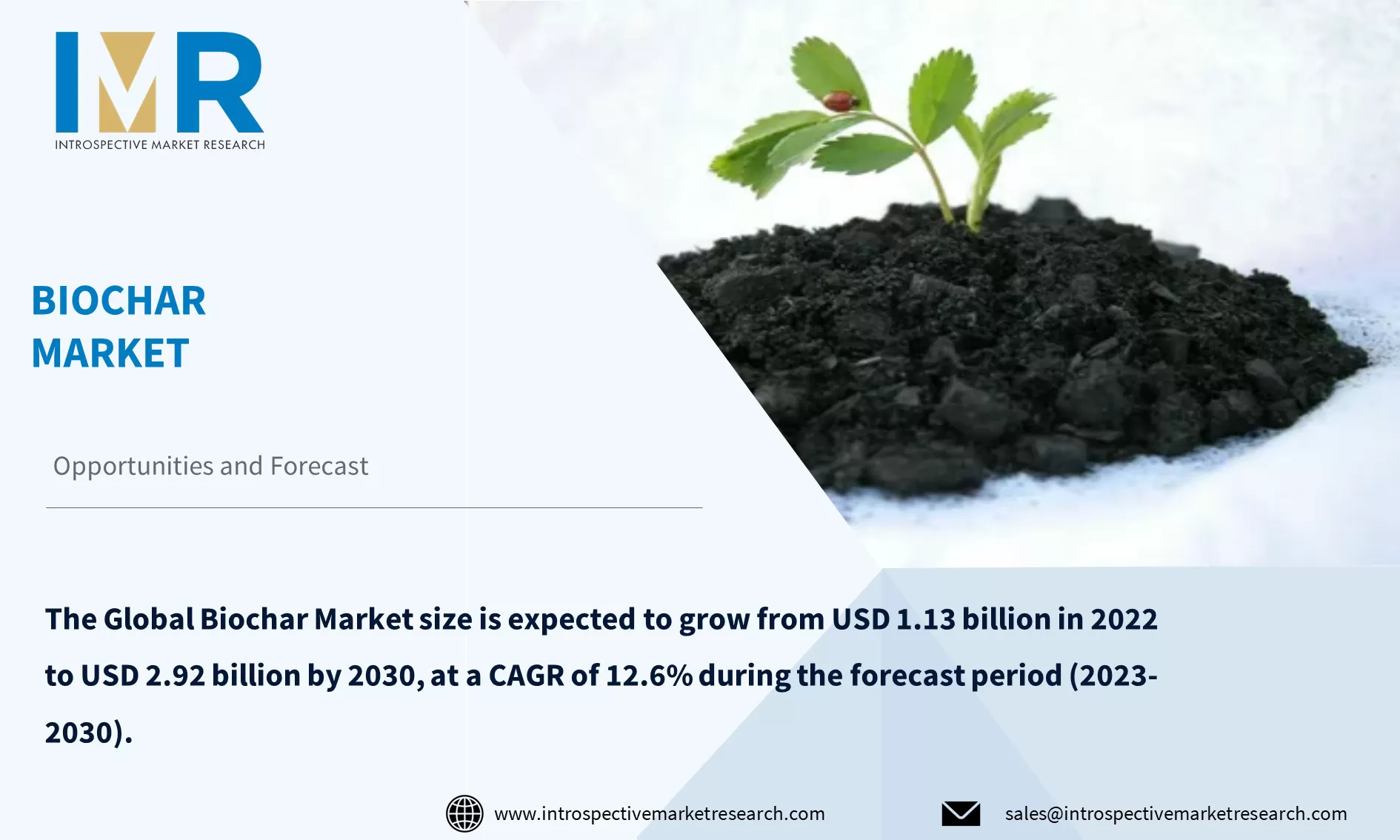
The Global Biochar Market size is expected to grow from USD 1.13 billion in 2022 to USD 2.92 billion by 2030, at a CAGR of 12.6% during the forecast period (2023-2030).
The depletion of soil quality due to the increasing population and excessive use of chemical fertilizers has highlighted the urgent need for sustainable agricultural practices. Biochar, derived from carbonized biomass, emerges as a promising solution to enhance soil fertility and crop growth. Unlike charcoal used for fuel or industrial purposes, biochar is specifically designed to enrich soils by retaining water and nutrients through its porous structure. The thermochemical processes of pyrolysis, combustion, and gasification are employed to convert feedstock into biochar. With its widespread benefits and the growing concern over climate change, the biochar market is expected to flourish as it offers a means to improve soil health and mitigate environmental challenges.
Top Key Players for Biochar Market:
Oregon Biochar Solutions, American Biochar Company, Aries Clean Energy LLC, ArSta eco Pvt. Ltd., Avello Bioenergy Inc., Biochar Supreme LLC, Carbon Gold Ltd., Karr Group, Restoration Bioproducts, NetZero, Pacific Biochar Benefit Corporation, Phoenix energy systems Inc., Vow ASA, Swiss Biochar GmbH, And Other Major Players.
Market Dynamics and Factors for Biochar Market:
Drivers:
Alternative to Chemicals Used in Waste Water Treatment
With its elevated carbon content, expansive surface area, diverse functional groups, and heightened pore volume, biochar demonstrates exceptional adsorption capabilities across a diverse range of organic and inorganic contaminants present in water bodies and wastewater. While conventional methods like ion exchange, membrane separation, and chemical precipitation are viable for disposing of these pollutants, concerns persist about their cost-effectiveness and residual chemical presence. Capitalizing on its advantageous physicochemical attributes encompassing acid-base interactions, elemental composition, porosity, and surface functionalities, biochar emerges as an economical and compelling alternative.
Opportunities:
The Low-Middle Income Countries
Wastewater has raised concerns globally, prompting the adoption of advanced technologies by high-income countries for its treatment and repurposing, particularly for irrigation. However, the costliness of these methods makes them unfeasible for developing nations. The 2017 UN World Water Development Report revealed that while affluent countries treat around 70% of municipal and industrial wastewater, this ratio drops to 38% in upper-middle-income nations and a mere 8% in low-income countries, where efforts supported by the World Bank and the UN aim to transform sewage water into potable resources, mitigating water scarcity.
Segmentation Analysis of the Biochar Market:
- By Feedstock, the woody biomass segment is estimated to lead the growth of the biochar market over the projected period. Biochar can be made from woody biomass such as wood chips, sawdust, shavings, or bark that is generated during timber harvesting or as a byproduct of the manufacturing of wood products.
- By Technology, the pyrolysis segment is anticipated to have the highest share during the analysis period. Pyrolysis is the most common biochar production technology, and it also occurs in the early stages of the combustion and gasification processes. Aside from biochar, modern pyrolyzers can produce bio-oil and gas.
Regional Analysis of the Biochar Market:
During the analysis period, the Asia-Pacific region is projected to lead the biochar market's growth, with countries such as India, China, Japan, South Korea, and Australia playing pivotal roles. Notably, these nations in the region, particularly in developing contexts, recognize biochar's significance in electricity generation, prompting initiatives to encourage its adoption. In India, where fossil fuels have historically dominated electricity production, there is a substantial installed capacity (59.9%) and supply (78.2%) for electricity generation.
Key Industry Development:
- In July 2022, NetZero announced the start of the first industrial biochar production plant in Latin America. Brazil has been chosen by the company for this project. The plant is expected to begin operations by the end of 2022. Its annual capacity will be 4,000 tons of biochar, which equates to more than 6,500 tons of CO2 removed each year.
- In May 2022, Carbon Streaming Corporation announced the signing of a carbon credit streaming agreement (the "Stream Agreement") with Restoration Bioproducts LLC ("Restoration Bioproducts") to fund the construction of a biochar production facility in Virginia.





